The NZXT N7 Z370 Motherboard Review: A New Player in the Motherboard Market
by Joe Shields on January 9, 2018 12:00 PM EST- Posted in
- Motherboards
- Intel
- NZXT
- Coffee Lake
- i7-8700K
Gaming Performance 2017: AoTS Escalation, ROTR
AoTSe
Ashes of the Singularity is a Real Time Strategy game developed by Oxide Games and Stardock Entertainment. The original AoTS was released back in March of 2016 while the standalone expansion pack, Escalation, was released in November of 2016 adding more structures, maps, and units. We use this specific benchmark as it relies on both a good GPU as well as on the CPU in order to get the most frames per second. This balance is able to better display any system differences in gaming as opposed to a more GPU heavy title where the CPU and system don't matter quite as much. We use the default "Crazy" in-game settings using the DX11 rendering path in both 1080p and 4K UHD resolutions. The benchmark is run four times and the results averaged then plugged into the graph.
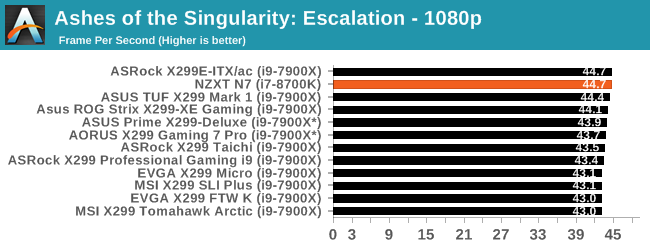
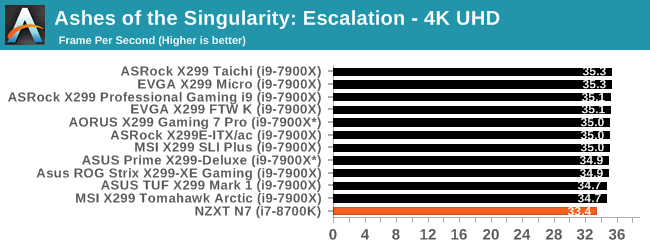
The AOTSe results remain incredibly close at both resolutions. The i7-8700K even with a huge thread deficit comparatively, reached 44.7 FPS matching the fastest result we had. Our 4K results, which should rely less on the CPU, it was at the bottom of the pack able to push 33.4 FPS. 1 FPS (~3%) behind the pack.
Rise of the Tomb Raider
Rise of the Tomb Raider is a third-person action-adventure game that features similar gameplay found in 2013's Tomb Raider. Players control Lara Croft through various environments, battling enemies, and completing puzzle platforming sections, while using improvised weapons and gadgets in order to progress through the story.
One of the unique aspects of this benchmark is that it’s actually the average of 3 sub-benchmarks that fly through different environments, which keeps the benchmark from being too weighted towards a GPU’s performance characteristics under any one scene.
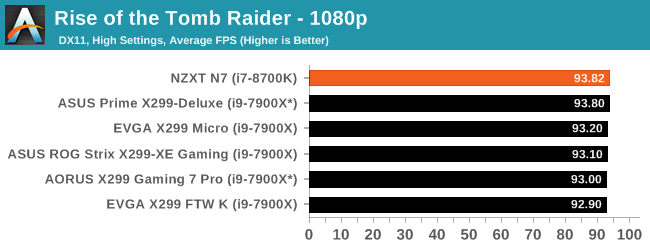
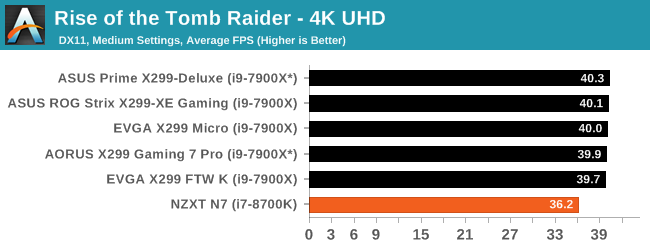
Rise of the Tomb Raider results are also remarkably close together with the NZXT N7 and i7-8700K combo leading the pack by a negligible margin. For all intents and purposes, 1 FPS when we are talking over 90 is a margin of error difference. The 4K results showed nearly a 3 FPS difference with reaching 36.2 FPS, around 3 FPS (almost 10%) behind the group.



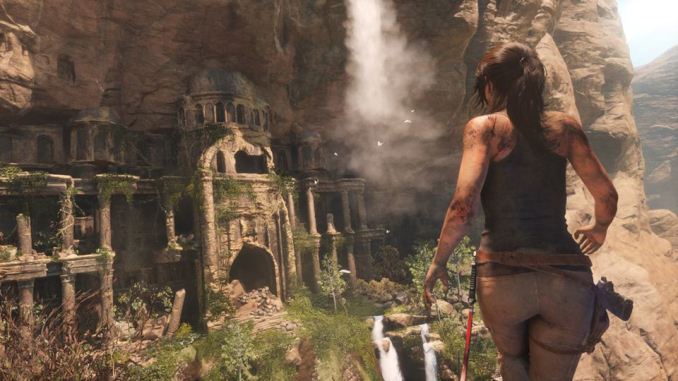








60 Comments
View All Comments
temptemp - Thursday, January 11, 2018 - link
WHY THE FUCK ARE YOU COMPARING DIFFERENT CPUs TO THE 8700K?!?!?!?!?Scientific method is you keep all except one variable constant.
This is a motherboard comparison.... wow
I throught this was a reputable site... wow lost my trust
Dug - Monday, January 15, 2018 - link
That was explained if you actually read the article. You obviously aren't a reputable or trusted reader.Kaihekoa - Saturday, January 13, 2018 - link
The usual Anandtech quality reviews, but the comparisons to i9 platform MBs are completely useless.justareader - Sunday, January 14, 2018 - link
The I/O ports should be color coordinated as well.thomasg - Monday, January 15, 2018 - link
I can appreciate the no-nonsense looks, and I'm sure there's a (probably very small) market for it.But what the market is really missing is an actual no-nonsense board.
I'd just love a simple and functional board with all the regular firmware options the high-end stuff has. No useless shrouds, no fancy lighting, no pointlessly oversized component coolers.
Just a solid board with an usable design for proper airflow (i. e. no 20 cc passive blocks oriented at 90 and 180 degrees at the same time).
For example something as Super Micro now does for Epyc workstations, just for the desktop platform: https://www.supermicro.nl/Aplus/motherboard/EPYC70...